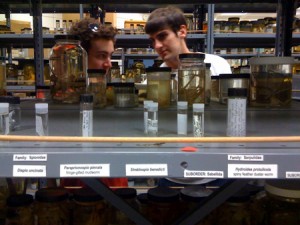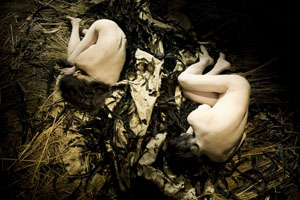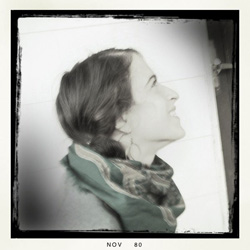Sewon Kang ’14 talks about student commissioned works by Sam Long ’12 (March 31) and Ethan Cohen ’13 (April 14-22).
The Center for the Arts Creative Campus Initiative is proud to present two student commissioned works that address the ever-growing challenge of environmentalism in exciting new blends of art and science. These student commissions are part of Feet to the Fire programming, a major undertaking on Wesleyan’s campus to examine critical environmental issues through art and science.
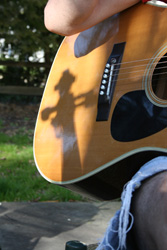 At 2pm on Saturday, March 31, 2012 in Memorial Chapel, Sam Long ’12 will perform his senior thesis project, which combines environmental studies and music in a special collaborative performance inspired by the Connecticut River, one of Middletown’s most spectacular local resources. The performers call themselves The Honey and the Sting and will play all original music on a stage powered by students on bicycle energy generators. Celebrating what the earth provides without contributing negatively to the problem, such a performance has never been attempted at Wesleyan before.
At 2pm on Saturday, March 31, 2012 in Memorial Chapel, Sam Long ’12 will perform his senior thesis project, which combines environmental studies and music in a special collaborative performance inspired by the Connecticut River, one of Middletown’s most spectacular local resources. The performers call themselves The Honey and the Sting and will play all original music on a stage powered by students on bicycle energy generators. Celebrating what the earth provides without contributing negatively to the problem, such a performance has never been attempted at Wesleyan before.
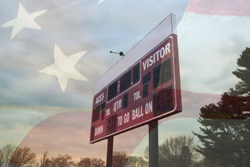 Scoreboard is an installation by Ethan Cohen ’13 that brings together the romanticized American image and the aesthetic of energy efficiency. It replicates the “home” score, an isolated section of the standard football scoreboard, first using traditional incandescent light bulbs. This ideal is then contrasted with a version of the same board that utilizes more energy-efficient fluorescent light bulbs. The comparison of the two nearly identical boards side by side challenges viewers to decide for themselves whether or not the soul of an object can be retained in energy efficient form. Scoreboard will be installed in the Science Library during Wesleyan’s Earth Week Celebration – Saturday, April 14 through Sunday, April 22, 2012.
Scoreboard is an installation by Ethan Cohen ’13 that brings together the romanticized American image and the aesthetic of energy efficiency. It replicates the “home” score, an isolated section of the standard football scoreboard, first using traditional incandescent light bulbs. This ideal is then contrasted with a version of the same board that utilizes more energy-efficient fluorescent light bulbs. The comparison of the two nearly identical boards side by side challenges viewers to decide for themselves whether or not the soul of an object can be retained in energy efficient form. Scoreboard will be installed in the Science Library during Wesleyan’s Earth Week Celebration – Saturday, April 14 through Sunday, April 22, 2012.



